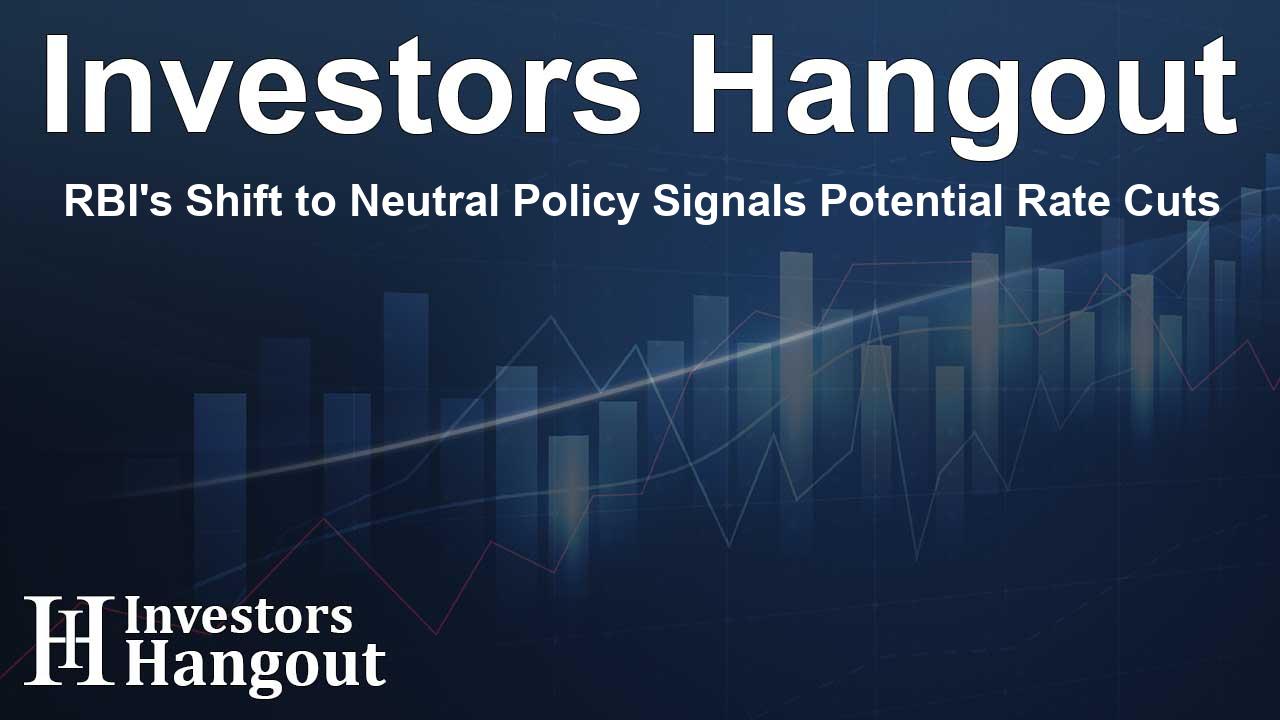RBI's Shift to Neutral Policy Signals Potential Rate Cuts

RBI Maintains Key Rates Amid Economic Concerns
The Reserve Bank of India (RBI) has decided to keep its key interest rate unchanged during a recent meeting, surprising no one in the financial world. The central bank's Monetary Policy Committee (MPC) opted to retain the repo rate at 6.50% for the tenth consecutive time. However, a notable shift in their stance to 'neutral' has raised eyebrows, suggesting that they may consider rate cuts in the near future as the economy begins to show signs of slowing down.
Understanding the MPC's Decision
The MPC, comprised of three members from the RBI and three external experts, unanimously supported the decision to keep rates stable, shifting from a previous stance of 'withdrawal of accommodation' to a more flexible 'neutral' position. This change is significant as it indicates the committee’s intent to balance inflation control with the need for economic growth.
Committee’s Focus on Inflation and Growth
Despite the shift, the committee remains dedicated to ensuring that inflation aligns with its target. For the last two months, India’s annual retail inflation has remained under the RBI's target of 4%, registering 3.65% in the latest figures. However, this was slightly higher than July's rate, showing a cautious progression.
Economic Signals Prompt Concern
Recent global tensions, particularly in the Middle East, have compounded uncertainties regarding inflation trends, but there are other domestic signals that are hard to ignore. High-frequency economic indicators are showing signs of a slowdown. For instance, the manufacturing Purchasing Managers' Index (PMI) recently fell to an eight-month low, while the services PMI dropped to a ten-month low.
Growth Projections and Economic Health
India's economic growth slowed to 6.7% in the previous June quarter, prompting discussions surrounding the sustainability of this growth amidst current conditions. Economists around the world are closely watching to see how the RBI plans to navigate these challenges and whether future rate cuts will be necessary to stimulate growth.
Market Reactions and Future Outlook
The market has largely anticipated the RBI's decision to hold rates steady, with about 80% of economists predicting that the status quo would remain. The last change in the rate came way back in February 2023 when the policy rate was upped to 6.50%. The current economic climate calls for careful consideration from the RBI, as they navigate through the dual challenges of fostering growth while managing inflation.
Conclusion
The RBI's current position underscores a careful balancing act as they remain vigilant towards economic indicators that could influence future policies. The transition to a neutral stance is a clear signal from the central bank, suggesting that they are ready to act should the economic situation continue to develop unfavorably.
Frequently Asked Questions
What does the RBI's neutral stance mean for interest rates?
The neutral stance indicates that the RBI is open to adjusting interest rates in response to economic conditions, potentially leading to rate cuts if necessary.
How does inflation affect the RBI's interest rate decisions?
Inflation targeting is a crucial aspect of the RBI's mandate, and its decisions on interest rates are influenced by current inflation trends relative to its targets.
What economic indicators is the RBI monitoring?
The RBI monitors various economic indicators, including inflation rates, PMI data, and overall GDP growth, to inform its monetary policy decisions.
Can we expect rate cuts in the near future?
While the RBI has shifted to a neutral stance, actual rate cuts depend on the evolving economic context and inflation trends.
What impact does the global economy have on Indian monetary policy?
The global economic environment, including geopolitical tensions and global inflation, can significantly influence the RBI's policy decisions and economic outlook.
About Investors Hangout
Investors Hangout is a leading online stock forum for financial discussion and learning, offering a wide range of free tools and resources. It draws in traders of all levels, who exchange market knowledge, investigate trading tactics, and keep an eye on industry developments in real time. Featuring financial articles, stock message boards, quotes, charts, company profiles, and live news updates. Through cooperative learning and a wealth of informational resources, it helps users from novices creating their first portfolios to experts honing their techniques. Join Investors Hangout today: https://investorshangout.com/
Disclaimer: The content of this article is solely for general informational purposes only; it does not represent legal, financial, or investment advice. Investors Hangout does not offer financial advice; the author is not a licensed financial advisor. Consult a qualified advisor before making any financial or investment decisions based on this article. The author's interpretation of publicly available data shapes the opinions presented here; as a result, they should not be taken as advice to purchase, sell, or hold any securities mentioned or any other investments. The author does not guarantee the accuracy, completeness, or timeliness of any material, providing it "as is." Information and market conditions may change; past performance is not indicative of future outcomes. If any of the material offered here is inaccurate, please contact us for corrections.